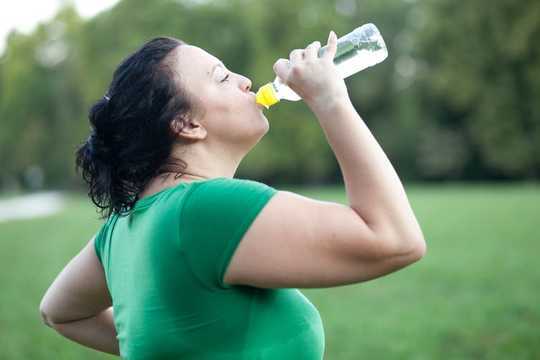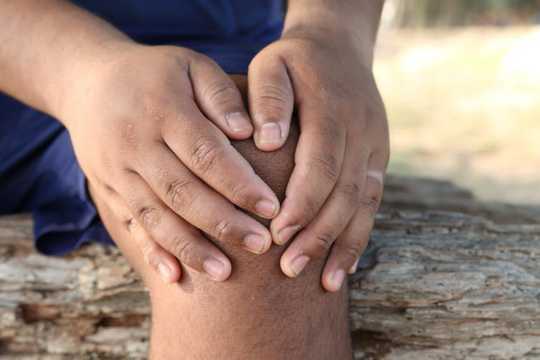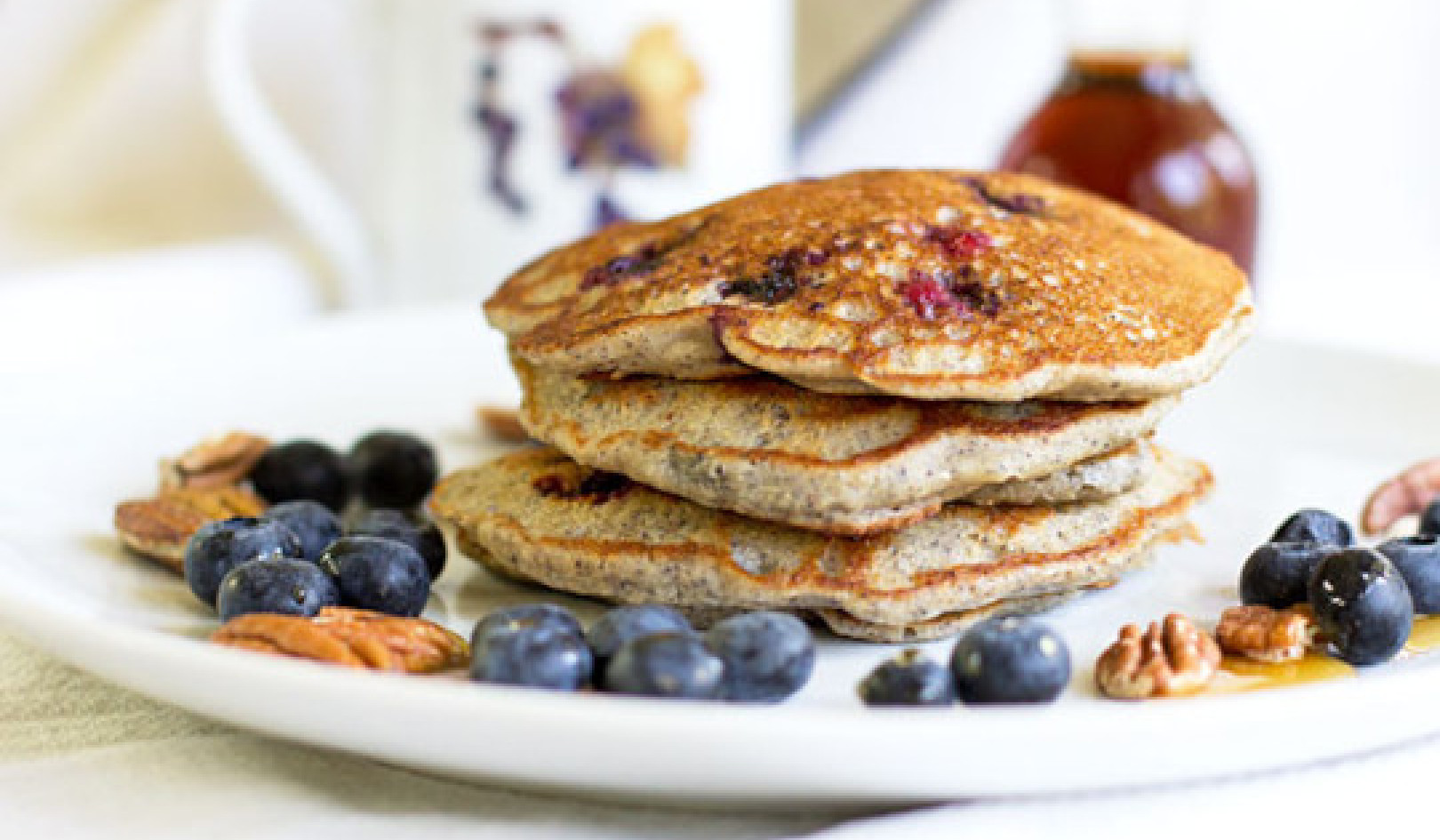
It’s OK to feel out of breath when you start a new exercise program. Here’s why it gets easier with time. from www.shutterstock.com
Perhaps your GP has recommended you exercise more, or you’ve had a recent health scare. Maybe your family’s been nagging you to get off the couch or you’ve decided yourself that it’s time to lose some weight.
How do you find the motivation, time and resources to get fit, particularly if you haven’t exercised in a while? How do you choose the best type of exercise? And do you need a health check before you start?
Overcoming barriers to exercise
Motivation
Understanding the effect a sedentary lifestyle has on your health often hits home only after a serious event such as hearing bad news from your doctor. For some people, that’s often enough motivation to get started.
Surviving a serious illness as a result of an inactive lifestyle, such as a heart attack or stroke, can also be frightening enough to provide a great deal of motivation.
So, if you have not exercised for several years or haven’t exercised before, a it’s a good idea to get a health check with your GP before starting.
Then you need to keep motivated enough to stick with your exercise program. You can track your training or fitness level and set some achievable goals to keep going.
Lack of time
Finding the time and effort to fit exercise into your daily routine is challenging. We know being “time poor” is a common reason for not exercising. And many people such as office workers, vehicle or machine operators have low activity levels at work and don’t feel like exercising after a long day.
One way to get around these barriers might be to attend a group exercise session or join a sports club. If you find exercise boring, you can encourage a friend to join you or join an exercise group to make it enjoyable. If you played sport in your youth, that might provide an option.
Having a friend to exercise with or team mates to support you gives a sense of commitment so that you have to be there and will be challenged if you fail to show up.
Resources
You don’t need to join a gym with a lot of fancy equipment to get fit. There are many YouTube videos of safe routines that you can follow and adjust as you get fitter.
This one demonstrates a 15 minute cardio exercise routine that you can do at home.
{vembed Y=VHyGqsPOUHs}
You don’t need any special equipment to exercise at home along with this 15 minute cardio workout for beginners.
Many exercises – including squats, push ups and sit ups – don’t need special equipment. And rather than improving muscle strength with weights at the gym, you can fill milk bottles with water instead.
Yes, you’ll huff and puff. But it gets easier
You might be thinking about starting aerobic exercise like the cardio workout above, or walking, jogging, swimming or cycling. All need oxygen to provide energy over several minutes or longer.
When we perform aerobic exercise, our heart rate increases along with our breathing rate and depth. This is because this type of exercise requires oxygen to provide energy to keep going.
When we are not used to this type of exercise our body is inefficient at using the oxygen we breathe to generate energy for our skeletal muscles. That’s why when we start an exercise program we huff and puff more, get tired quickly and may not finish the exercise.
But if we keep exercising regularly, our bodies become more efficient at using oxygen and we become better at generating enough energy for our muscles to work.
Over weeks of regular exercise, the number and efficiency of our body’s mini-powerhouses – mitochondria – increase in each cell. This increases the energy they can supply to the muscles, exercising becomes easier and we recover faster from each session.
That’s why it’s important to continue and repeat exercise sessions, even after a shaky start or a few set-backs. Yes, it can be a big challenge, but aerobic exercise gets easier over time as the body gets used to providing the energy it needs.
Thinking of yoga or simple stretches? Here’s what to expect
Yoga is a great way to start an exercise program and you can perform it at various levels of intensity. Stretching and other moves improve flexibility and strength. Yoga also emphasises breathing and relaxation through meditation.
Yoga, like other forms of exercise, will be challenging to begin with. But it does get easier over the weeks as your body adapts. So, it is important to be persistent and make the exercise part of your routine with at least three sessions of up to one hour every week.
At the start, you may get sore muscles. While this can be uncomfortable, the soreness goes away after about a week. You can reduce this soreness by starting with low intensity and building gradually over the first month.
Once your muscles become used to the new movements, the soreness will be minimal as you progress.
Watch your joints
We know being overweight or obese has detrimental effects on the heart, bones, joints and other organs including the pancreas, which regulates blood glucose (sugar) levels. Obesity can also affect brain health and is linked to poor cognition.
The good news is that regular exercise can help reduce these negative effects.

To avoid pain to the knee and other joints, try gentle exercise or swimming before taking on anything more vigorous if you are obese or overweight. from www.shutterstock.com
But if you are overweight or obese, taking up exercise can place great strain on your joints, particularly the articulating surface, the cartilage surface of bones that contact each other. So hips, knees and ankles can become inflamed and painful.
So it may be best to include exercise that reduces weight bearing, such as exercise in water or using a stationary exercise bike or rowing machine. Once you’ve lost some weight and your cardiovascular function has improved, then you can add more walking or jogging to your exercise program.
The right diet helps power you along
A healthy diet you can maintain in the long term is a very important part of any fitness routine. Not only can it help you lose weight, it can also provide the right type of fuel to power your new exercise program.
Getting plenty of fibre from fruit, vegetables and whole grains will help to reduce weight and keep it off while exercising.
Sugar, especially the type found in fizzy drinks and sweets, are low in nutrients and increase the risk of diabetes, metabolic syndrome and cardiovascular disease. So cut down on refined carbohydrates like some breads and rice, sugary cereals and refined pasta since these include sugars we are trying to avoid and have had their fibre removed. Replace them with oats, carrots or potatoes.
It’s best to avoid fad diets, which tend to be restrictive and difficult to maintain. They can lead to a yo-yo effect where you lose weight only for it to return.
In a nutshell
Once you’ve decided to start exercising, and had a medical check if needed, start slowly and build your exercise routine up over weeks and months. Make it interesting and enjoyable, perhaps by working out with a friend or group. Set some achievable goals, try to stick to them and don’t give up if you have a set back.
Weight loss and getting fit requires different approaches for different people so find what works for you and make it part of your lifestyle. Increase the intensity and frequency of your exercise gradually from a minimal three times a week for 20 minutes to longer, more intense sessions more often.![]()
About the Author
Andrew Lavender, Lecturer, School of Physiotherapy and Exercise Science, Curtin University
This article is republished from The Conversation under a Creative Commons license. Read the original article.
Books on Exercise from Amazon's Best Sellers list
The Four-Pack Revolution: How You Can Aim Lower, Cheat on Your Diet, and Still Lose Weight and Keep It Off
by Chael Sonnen and Ryan Parsons
The Four-Pack Revolution presents a total-life approach for attaining health and fitness goals without the hard work and suffering.
Click for more info or to order
Bigger Leaner Stronger: The Simple Science of Building the Ultimate Male Body
by Michael Matthews
If you want to build muscle, lose fat, and look great as quickly as possible without steroids, good genetics, or wasting ridiculous amounts of time in the gym and money on supplements, then you want to read this book.
Click for more info or to order
The Women's Health Big Book of Exercises: Four Weeks to a Leaner, Sexier, Healthier You!
by Adam Campbell
The Women's Health Big Book of Exercises is the essential workout guide for anyone who wants a better body. As the most comprehensive collection of exercises ever created, this book is a body-shaping power tool for both beginners and longtime fitness buffs alike.
Click for more info or to order
Bodyweight Strength Training Anatomy
by Bret Contreras
In Bodyweight Strength Training Anatomy, author and renowned trainer Bret Contreras has created the authoritative resource for increasing total-body strength without the need for free weights, fitness machines, or even a gym.
Click for more info or to order
The Men's Health Big Book of Exercises: Four Weeks to a Leaner, Stronger, More Muscular You!
by Adam Campbell
The Men's Health Big Book of Exercises is the essential workout guide for anyone who wants a better body. As the most comprehensive collection of exercises ever created, this book is a body-shaping power tool for both beginners and longtime fitness buffs alike.




























